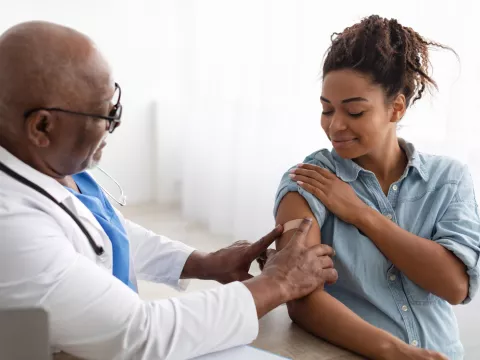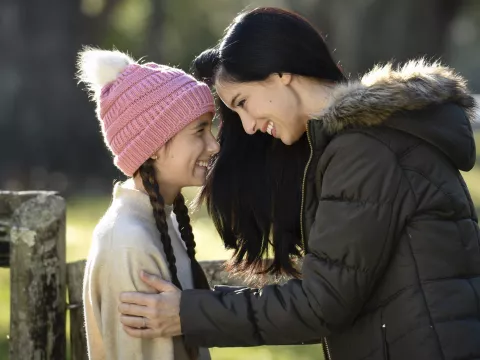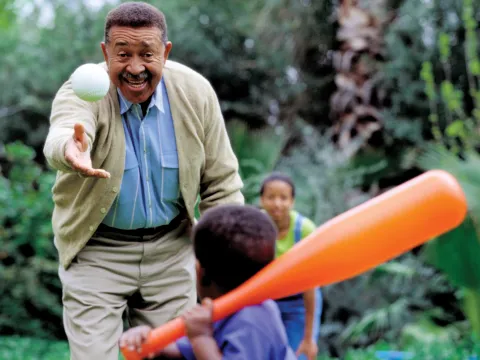- AdventHealth

Choose the health content that’s right for you, and get it delivered right in your inbox.
Did you know the word “vaccine” was taken from the Latin word “vacca,” meaning cow? We want to highlight the history of vaccines so our readers can better understand the mechanism behind how they work and have been saving lives for centuries.
From their humble beginnings to their current status as a lifesaving preventive health measure, childhood vaccines prevent an estimated 4 million deaths each year. Keep reading to learn more interesting facts about vaccines and reminders of why you should keep up with yours.
The Early Days of Vaccines
Starting as early as the 15th Century, people in different parts of the world have sought ways to prevent deadly illness by intentionally exposing healthy people to smallpox, a practice known as variolation. Some sources suggest these practices were taking place as early as 200 BCE.
Examples of early smallpox immunization include:
- Lady Mary Wortley Montagu brought smallpox inoculation to Europe 1721. She asked if her two daughters could be immunized against smallpox, as she had observed being practiced in Turkey
- Benjamin Jesty made a breakthrough in 1774 by testing his hypothesis that infecting people with cowpox, a bovine virus that can spread to humans, could protect them from smallpox
- In May 1796, English physician Edward Jenner expanded on Jesty’s discovery and inoculated 8-year-old James Phipps with matter collected from a cowpox sore on the hand of a milkmaid. After suffering a localized reaction and feeling unwell for a few days, Phipps made a full recovery
- Two months later, in July 1796, Jenner immunized Phipps with matter from a human smallpox sore to test Phipps’ immunity. The boy remained in perfect health and became the first person to be vaccinated successfully against smallpox. The term “vaccine” was later coined, taken from the Latin word for cow, “vacca”
Making Progress Toward Modern Medicine
The concept that eventually led to the development of vaccines was understood and used well by Indigenous peoples in the Americas long before the Europeans. Native American Tribes are documented to have immunized themselves by ingesting small amounts of substances to protect their bodies from the harmful effects of the same substances in larger quantities. For example, it’s documented that a member of the Karuk Tribe recorded, “Ever since I started eating small parts of poison oak on a regular basis, I have not gotten the big rashes that I used to get.”
Meanwhile, in 1806, French Emperor Napoleon Bonaparte and American President Thomas Jefferson acknowledged Dr. Jenner's work. Both leaders endorsed the smallpox vaccine, paving the way for more discoveries and advancements toward modern health care.
Here are some more key moments in the history of vaccines:
- Louis Pasteur created the first laboratory-produced vaccine for fowl cholera in chickens
- In 1885, Pasteur successfully prevented rabies through post-exposure immunization. The treatment proved to be controversial at the time. Pasteur had unsuccessfully attempted to use the vaccine on humans on two occasions, and injecting a human with a disease agent was still a new and uncertain method
- In 1894, Dr. Anna Wessels Williams isolated a strain of the diphtheria bacteria that was crucial in the development of an antitoxin for the disease
- From 1918 to 1919, the Spanish Flu pandemic killed an estimated 20 to 50 million people worldwide, including 1 in every 67 U.S. soldiers, making an influenza vaccine a priority for the United States military. Early experiments with influenza vaccines were carried out with inconclusive results
- In 1945, the first influenza vaccine was approved for military use, and for civilian use in 1946
- From 1952 to 1955, the first effective polio vaccine was developed by Jonas Salk and trials began. Salk tested the vaccine on himself and his family the following year, and mass trials involving over 1.3 million children took place in 1954
By the late 1960s, vaccine recommendations included a list for childhood immunizations with new additions like mumps and rubella vaccines that were combined into one shot with the measles, still known today as the MMR vaccine (measles, mumps, rubella).
The other vaccine recommendations included were for smallpox, diphtheria, tetanus, pertussis and polio. In the 1970s, the smallpox vaccine recommendation was dropped due to a successful eradication of the disease through smallpox vaccine campaign efforts.
Vaccines Today
Today, annual updates to immunization schedules for both children and adults offer guidance to health care providers with new recommendations, changes to existing recommendations or clarifications to assist with interpreting the schedule in specific circumstances. The schedules are reviewed by committees of experts from the Centers for Disease Control and Prevention, the American Academy of Pediatrics and the American Academy of Family Physicians.
As of 2020, the recommended vaccine schedule has been:
- Diphtheria*
- Tetanus*
- Pertussis*
- Measles**
- Mumps**
- Rubella**
- Polio (IPV)
- Hepatitis B
- Varicella (chickenpox)
- Hepatitis A
- Pneumococcal
- Influenza
- Rotavirus
*Given in combination as DTaP
**Given in combination as MMR
In response to the unprecedented COVID-19 pandemic, on November 20, 2020, Pfizer, a national biopharmaceutical company, requested emergency use authorization (EUA) from the FDA for their coronavirus vaccine. A biotechnology company, Moderna, followed suit with a highly effective vaccine.
COVID-19 vaccines became widely available to the public in 2021 and have successfully supported the slowing and weakening of the deadly illness. Adults and children ages 5 and up are still encouraged to get their COVID-19 vaccine series and available boosters.
The Past, Present and Future of Health Care
From groundbreaking practices in the 15th Century to the new technologies used in COVID-19 vaccines, we have come a long way. Vaccines now help protect against more than 20 dangerous diseases, from pneumonia and chickenpox to cervical cancer and Ebola; in just the last 30 years, childhood deaths have declined by over 50%, thanks largely to vaccines.
But there is still more to be done. In many parts of the world, 20% of children still go unvaccinated. The coming decades will need global cooperation, funding and dedication to a vision of whole health to ensure that all children and adults remain safe from preventable diseases by getting vaccinated.
Take the first step toward disease prevention today. Learn more about primary care and schedule a visit with a primary care provider to make sure you’re up to date on your recommended vaccines. We want you to stay well in body, mind and spirit for life.




